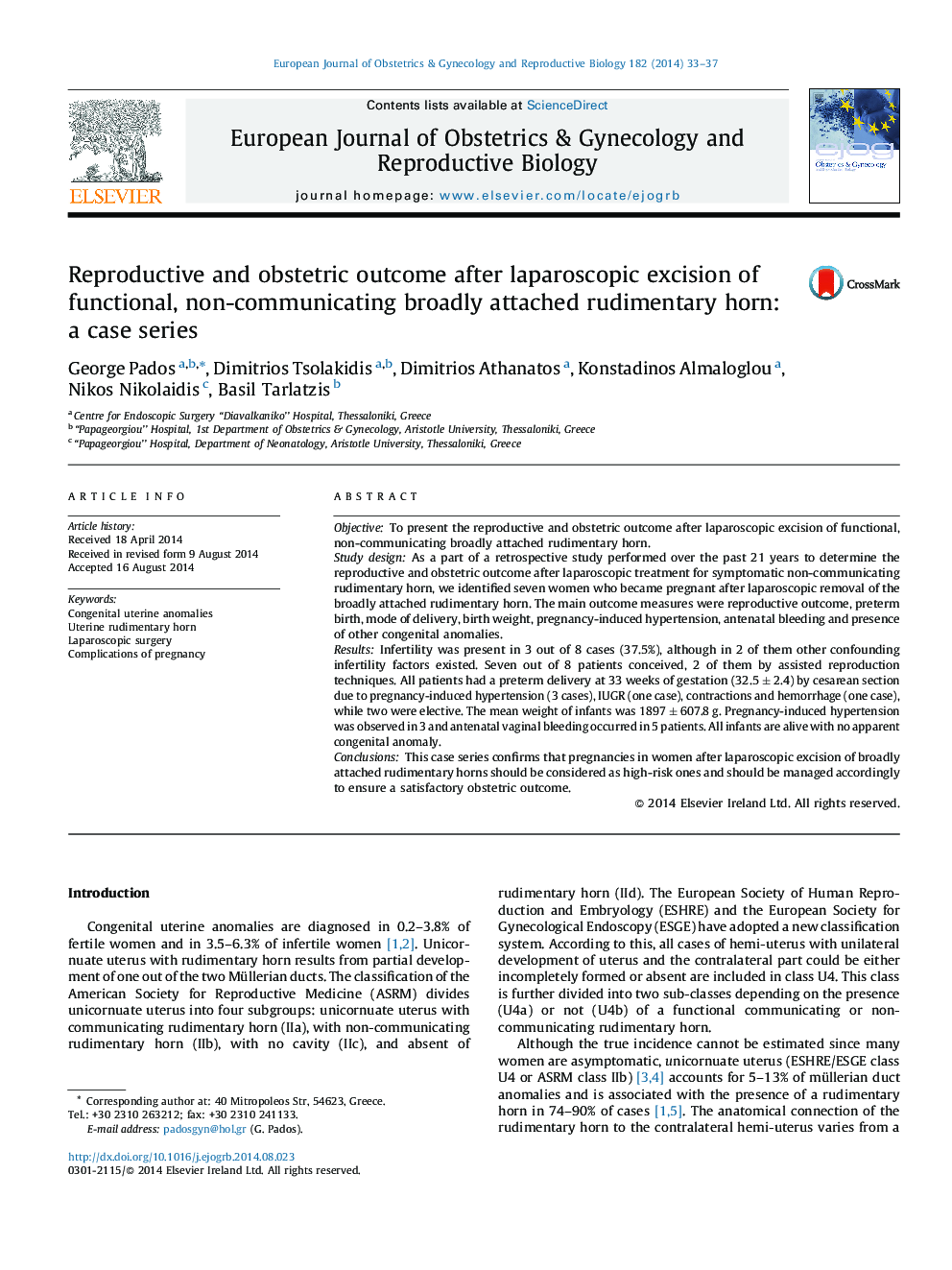| Article ID | Journal | Published Year | Pages | File Type |
|---|---|---|---|---|
| 6173419 | European Journal of Obstetrics & Gynecology and Reproductive Biology | 2014 | 5 Pages |
ObjectiveTo present the reproductive and obstetric outcome after laparoscopic excision of functional, non-communicating broadly attached rudimentary horn.Study designAs a part of a retrospective study performed over the past 21 years to determine the reproductive and obstetric outcome after laparoscopic treatment for symptomatic non-communicating rudimentary horn, we identified seven women who became pregnant after laparoscopic removal of the broadly attached rudimentary horn. The main outcome measures were reproductive outcome, preterm birth, mode of delivery, birth weight, pregnancy-induced hypertension, antenatal bleeding and presence of other congenital anomalies.ResultsInfertility was present in 3 out of 8 cases (37.5%), although in 2 of them other confounding infertility factors existed. Seven out of 8 patients conceived, 2 of them by assisted reproduction techniques. All patients had a preterm delivery at 33 weeks of gestation (32.5 ± 2.4) by cesarean section due to pregnancy-induced hypertension (3 cases), IUGR (one case), contractions and hemorrhage (one case), while two were elective. The mean weight of infants was 1897 ± 607.8 g. Pregnancy-induced hypertension was observed in 3 and antenatal vaginal bleeding occurred in 5 patients. All infants are alive with no apparent congenital anomaly.ConclusionsThis case series confirms that pregnancies in women after laparoscopic excision of broadly attached rudimentary horns should be considered as high-risk ones and should be managed accordingly to ensure a satisfactory obstetric outcome.
